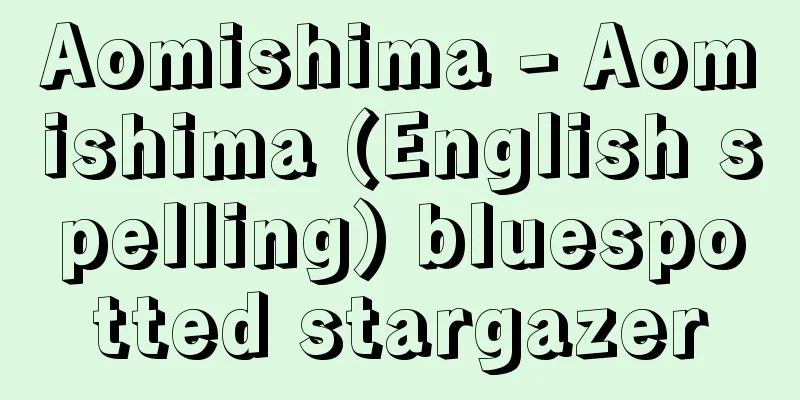Ennan

|
This is the most representative tea room of the Yabunuchi family. It is said that this tea room was given to his brother-in-law, Kenchu, the first head of the Yabunuchi family, by Furuta Oribe, who was going to war in the Battle of Osaka. The second head Shin'o was welcomed into the Nishi Honganji temple's tea ceremony master family and moved his residence to the front of the temple. At that time, the tea room from the Kenchu residence was also moved, and the garden was also faithfully restored. The tea room was named Tsubame-an and has been respected as the most representative tea room of the Yabunuchi family. In 1864 (Genji 1), the Yabunuchi family home was burned down in the war and Tsubame-an was lost, so a faithful copy of the tea room built by Takeda Giemon of Arima, Settsu (Kobe City), was moved in 1867 (Keio 3). This is the Tsubame-an that exists today. The thatched hip-and-gable roof house has a nijiriguchi opening facing the eaves of the earthen floor in the southeast corner. The temaeza and shobanseki seats are located on either side of the three-tatami guest seat. The greatest distinctive feature of Tsubame-an is that the shobanseki seat is separated from the guest seat by two sliding doors, and this style was particularly popular in samurai society. The large number of windows is also characteristic of Oribe's style, with a total of 10 windows, including a shikishi window with a kitchen for the temaeza. Driving nails for flower vases into the bokuseki window and the style of the long hanging shelf above, known as a hibari dana, also convey Oribe's intent. [Masaaki Nakamura] Source: Shogakukan Encyclopedia Nipponica About Encyclopedia Nipponica Information | Legend |
|
藪内(やぶのうち)家を代表する茶室。大坂の陣に出征する古田織部(おりべ)が、義弟にあたる藪内家初代剣仲(けんちゅう)に与えていった茶室であると伝えられている。2代真翁(しんおう)は西本願寺の茶道師家に迎えられ、門前に屋敷を移すことになった。このとき剣仲屋敷の茶室も移され、露地も忠実に復原されたとみられる。茶室は燕庵と名づけられ、藪内家の代表的な茶室として尊重されてきた。1864年(元治1)の兵火に藪内家は類焼し、燕庵も失われたため、摂津有馬(神戸市)の武田儀右衛門(ぎえもん)が忠実に写し建てていた茶室を1867年(慶応3)に移建した。これが現存する燕庵である。 茅葺(かやぶ)き入母屋造(いりもやづくり)で、南東隅の土間庇(どまびさし)に面して躙口(にじりぐち)をあけている。三畳の客座を挟んで点前座(てまえざ)と相伴席(しょうばんせき)を配している。客座との境に二枚襖(ふすま)を隔てて相伴席を付設した点に燕庵の最大の特色があり、この形式はとくに武家社会において歓迎された。窓が多いのも織部の作風の特色で、点前座勝手付きの色紙窓以下全部で10窓を数える。墨蹟窓(ぼくせきまど)に花入れの釘(くぎ)を打つこと、雲雀棚(ひばりだな)とよばれる上棚の長い釣棚の形式なども織部の作意を伝えている。 [中村昌生] 出典 小学館 日本大百科全書(ニッポニカ)日本大百科全書(ニッポニカ)について 情報 | 凡例 |
Recommend
Onimomiji - Onimomiji
...There are many horticultural varieties. In add...
obstruent
...Also, since nasals are often voiced, only the ...
Hypericaceae - Otogiri souka
Dicotyledonous, polypetalous. Shrubs or herbs, le...
Kindergarten Outline - Kindergarten Outline
This is a moral education book for children compi...
Matrilineal system - Bokeisei
A society in which the right to belong to a kinsh...
Rice seat - Komeza
A rice sales guild in the Middle Ages. Also calle...
Cho Myoung-hee (English spelling)
1892‐1942 Korean poet and novelist. His pen name w...
Alberti, Leon Battista
Born: February 14, 1404, Genoa Died April 25, 1472...
Imaisurugi - Imaisurugi
The centre of Tonami county, Ecchu province (Toyam...
Gravel - Jari (English spelling)
Coarse rounded particles formed when rocks break ...
Grahamstown (English spelling)
An inland city in the southern part of the Eastern...
Gasoline Tax - Gasoline Tax
A general term for the gasoline tax and local gaso...
Correctional facility - Kyouseishisetu
This refers to prisons, juvenile prisons, detentio...
Mulga
…The distribution of plants in Australia is large...
Rock creep
…There are three types of creeping material: rock...









